Enjoying the world from the perspective of a bicycle is a type of enjoyment shared by millions globally. For those who seeks a more engaging experience than simple racing through urban areas of a major city, designers and architects create bespoke cycling paths in terrific locations around the world.
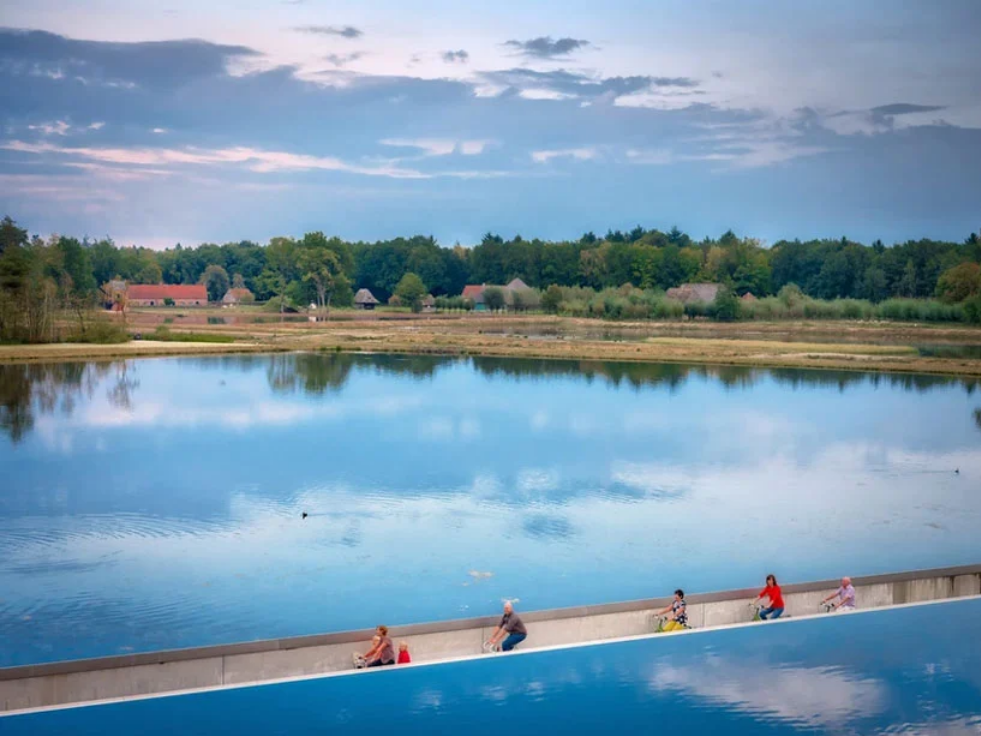
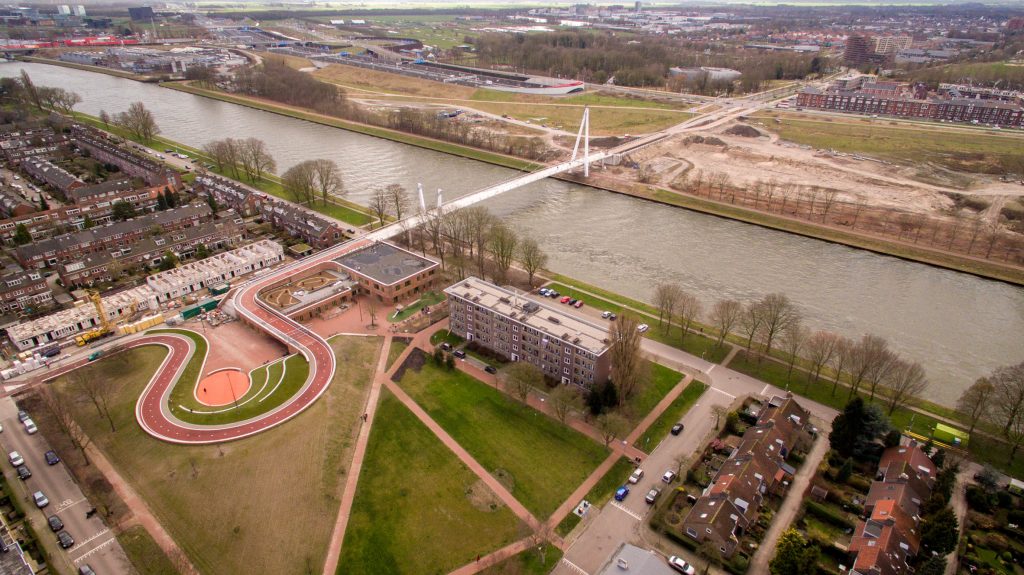
Dafne Schippers Bridge by NEXT Architects and Rudy Uytenhaak Architectenbureau
Amsterdam-based designers – NEXT Architects and Rudy Uytenhaak Architectenbureau – have teamed up to design a breathtaking bicycle track that takes city cycling to a brand new level. The new route winds over the roof of a school in the Dutch city of Utrecht and continues to form the 110-metre-long Dafne Schippers Bridge, a new route across the Amsterdam-Rhine Canal.
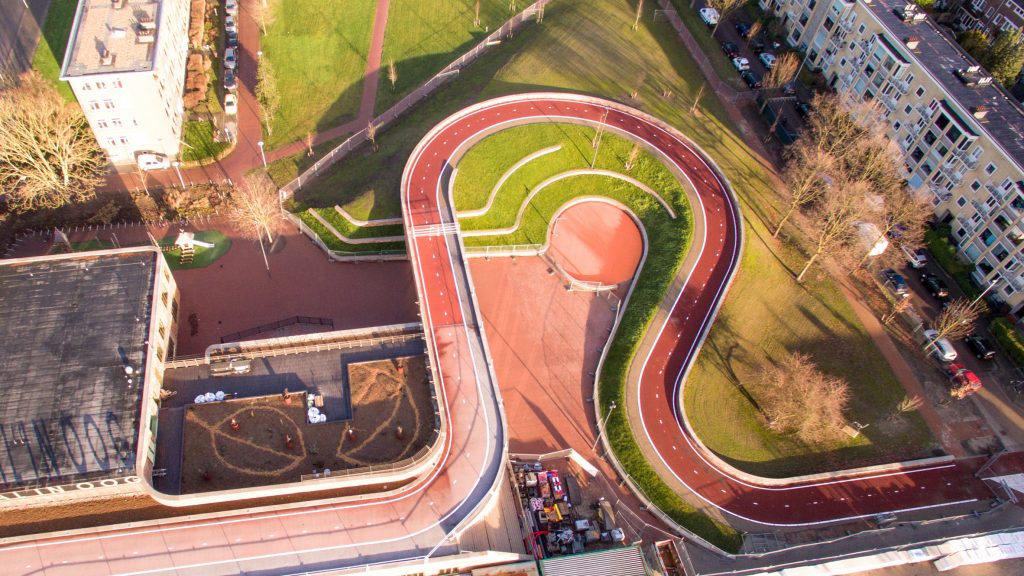
Dafne Schippers Bridge by NEXT Architects and Rudy Uytenhaak Architectenbureau
Brought together by the cycling path, a school and a public garden form a cohesive whole of infrastructure, architecture, and landscape, which makes the structure not just a bridge but also a destination. By integrating functions and making the bridge an integral part of the public space in the neighbourhood, the team has managed to create a new important meeting point for local residents and schoolchildren.
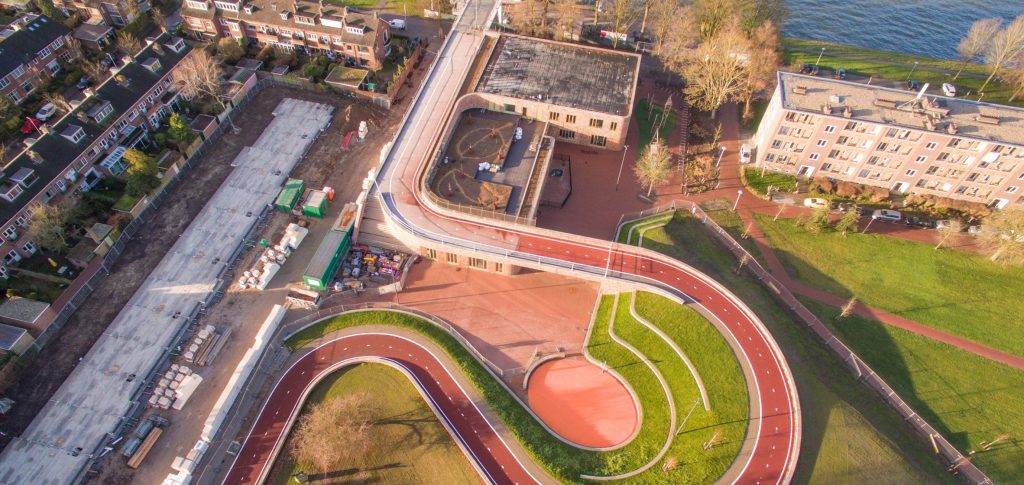
Dafne Schippers Bridge by NEXT Architects and Rudy Uytenhaak Architectenbureau
The bridge is coloured in a vivid hue of red and provides maximum space for greenery. The deck of the bridge runs between two asymmetric pylons and is raised nine metres above the water, stretching to 35 metres at its highest point in the centre. On one side of the canal, a larger pylon becomes a powerful landmark, while on the school side, a smaller pylon links up with a row of trees, seamlessly blending with the densely built environment.
The bridge is designed to be the main link in the express cycling route that connects the historical city centre with Utrecht’s new neighbourhood. It is expected to be used by more than 7,000 cyclists daily.
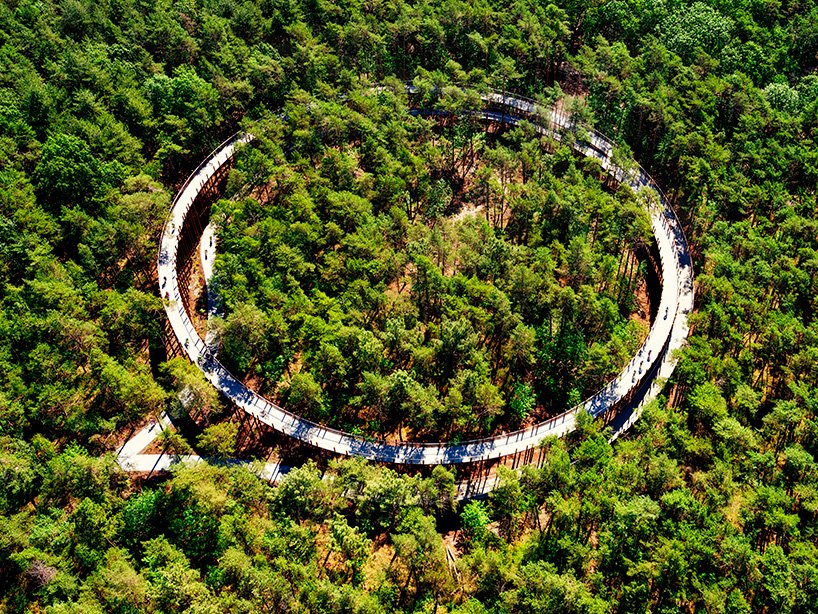
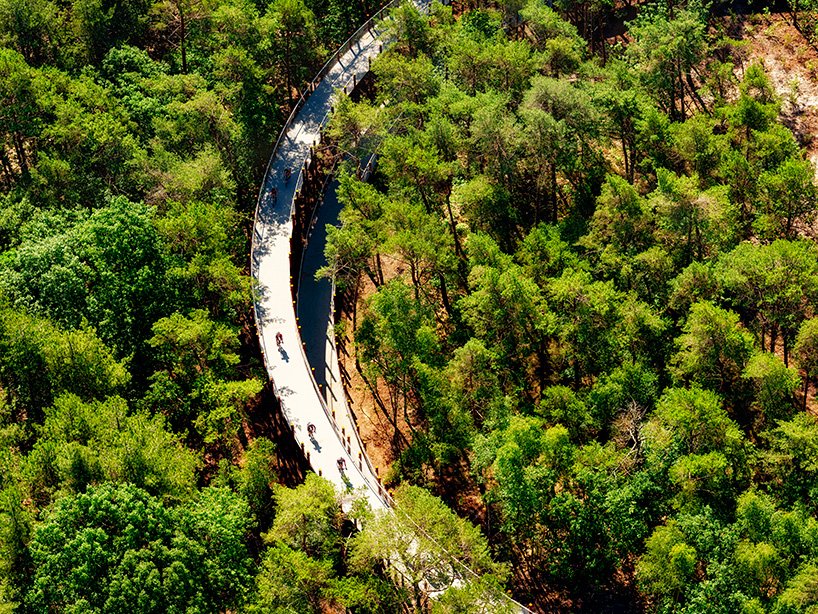
Cycling through the Trees by Pieter Daenen and De Gregorio & Partners
A totally unique cycling experience is offered by Pieter Daenen — landscape architect of Belgian Burolandschap — in collaboration with architects De Gregorio & Partners. The Cycling through the Trees project, commissioned by Visit Limburg, comprises an elevated gradually-inclined path for cyclists and pedestrians weaving through the treetops within Bosland forest, in the Belgian province of Limburg.
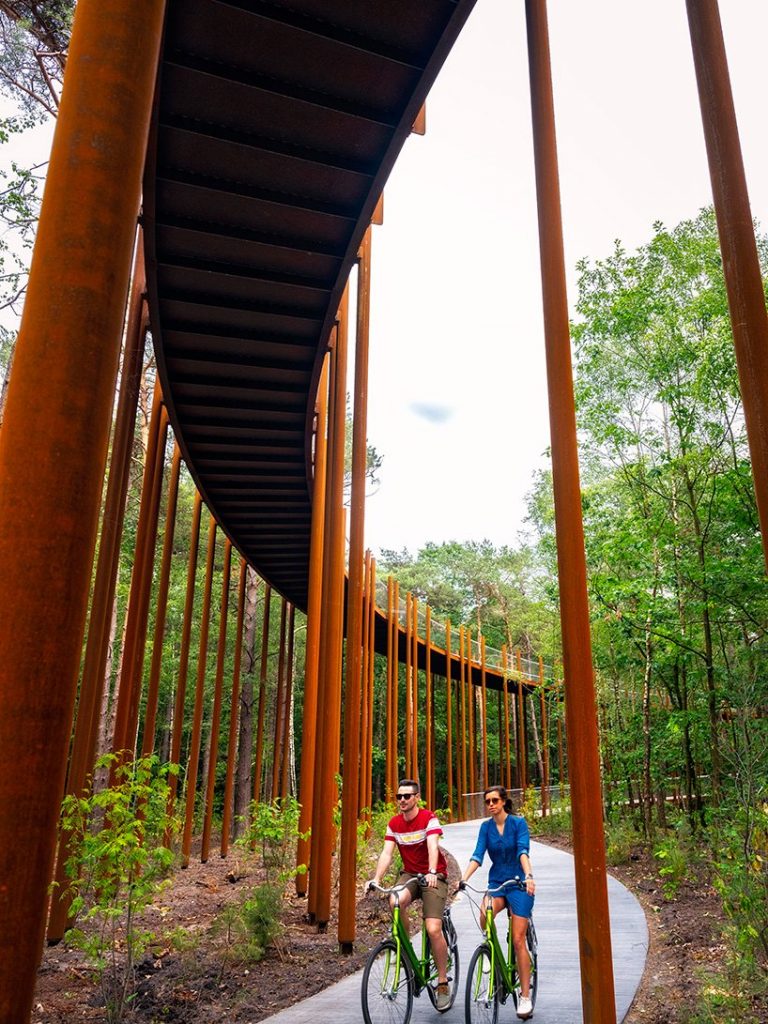
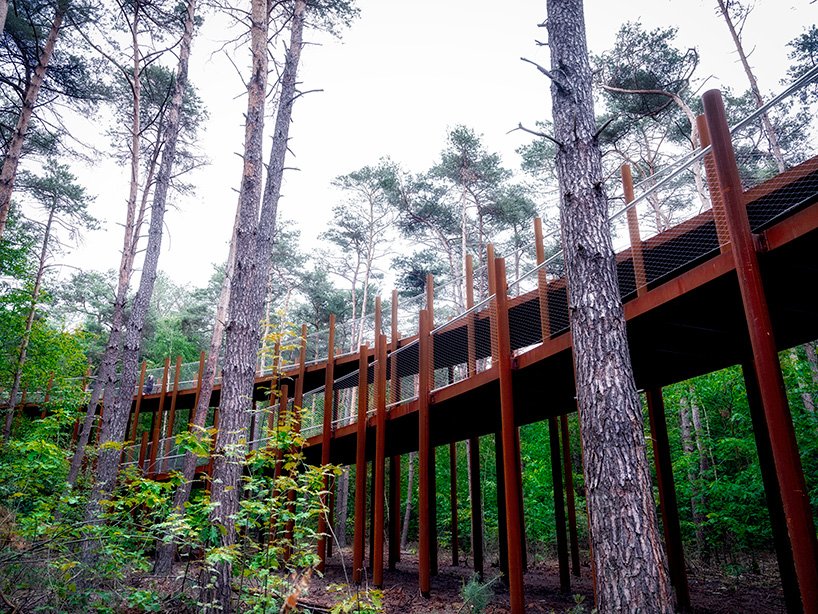
Cycling through the Trees by Pieter Daenen and De Gregorio & Partners
Stilted 10 metres above the ground, the bridge allows visitors to ride along a 100-meter diameter double circle that offers 360° views of the natural landscape. According to the design team, the large, clean-lined circle is conceived to represent a symbolic reference to the rings in tree trunks. The path is supported by a network of weathered steel columns that mimic the tactility and form of the pine tree trunks of the surrounding forest, seamlessly blending into its environment. The design of the structure allowed the architects to retain as much forest as possible, during the construction.
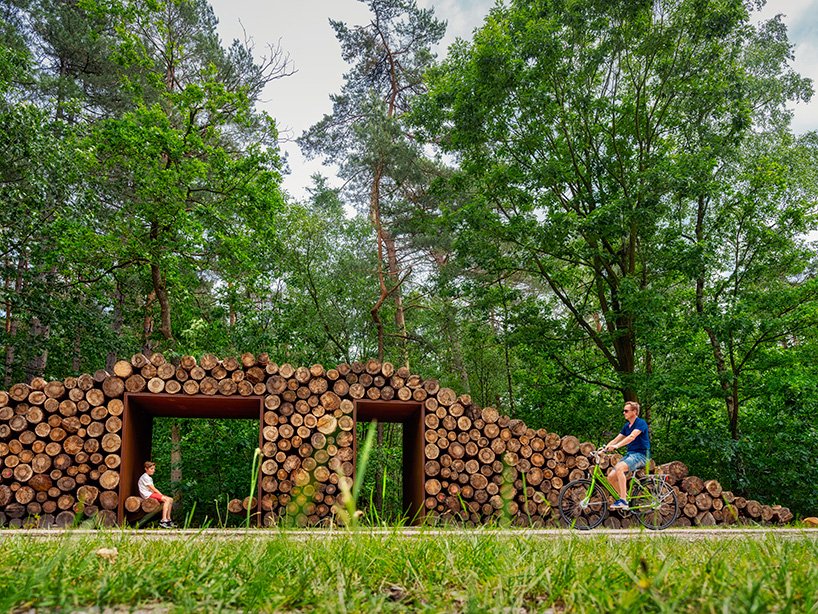
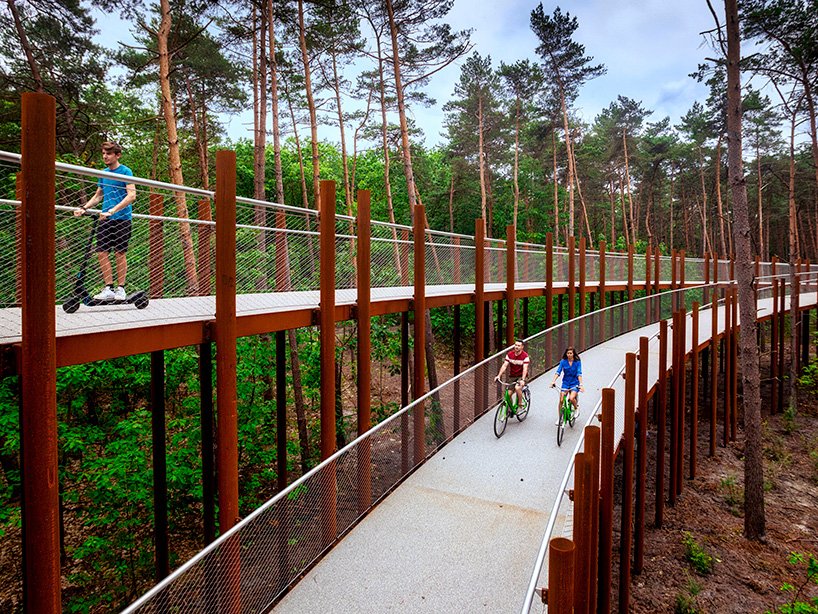
Cycling through the Trees by Pieter Daenen and De Gregorio & Partners
At the start of the path, visitors can relax in an information pavilion made from stacked recycled logs before getting off on a 700 metres ride among the trees. To ensure a comfortable cycling experience, there is a maximum rise of 4%.
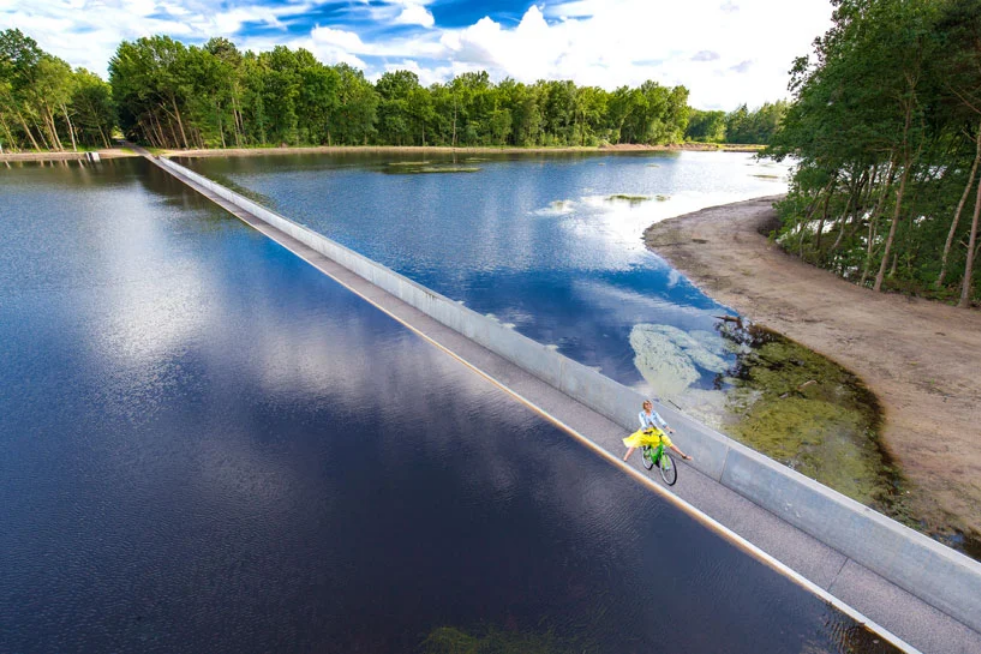
Cycling through Water by Lens°ass Architecten (ph: Luc Dalemans: also header image)
Another project of the Cycling Synergy by Visit Limburg, which aims to build the cycle network of the future establishing a fine balance between ecology and tourism, is Cycling through Water by local practice Lens°ass Architecten. The trail is situated in Belgium‘s largest lake district, De Wijers.

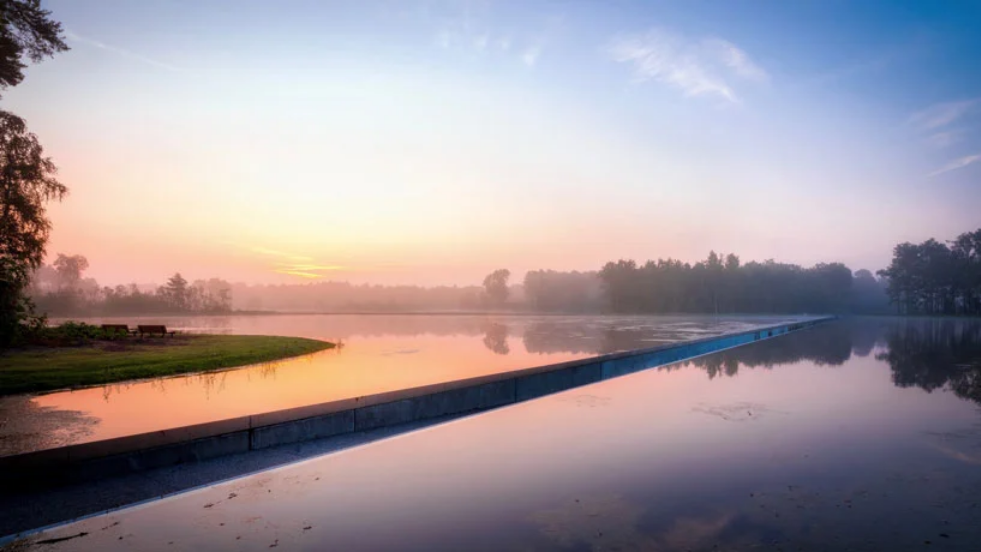
Cycling through Water by Lens°ass Architecten (ph: Luc Dalemans)
The path allows cyclists to ride through a 212 meters long and three meters wide concrete path with water at eye level on both sides and swans and other waterfowl out on the edge.
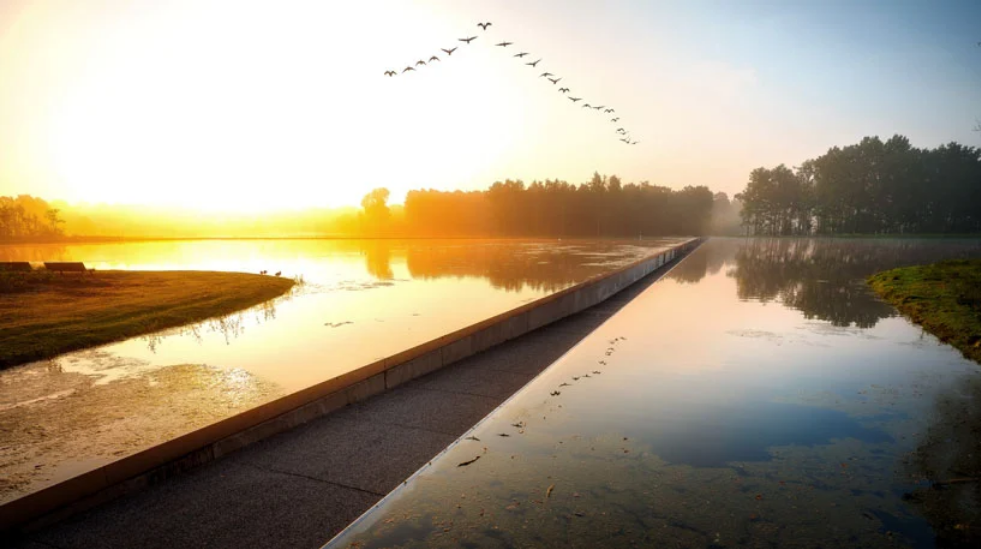
Cycling through Water by Lens°ass Architecten (ph: Luc Dalemans)
The construction of the bike trail was combined with nature conservation projects in the surrounding ponds. This resulted in improvement of the water quality and a significant increase in the habitat of amphibians who now have the ability to move uninterrupted between the two ponds joined by an underground crossing under the bike trail.